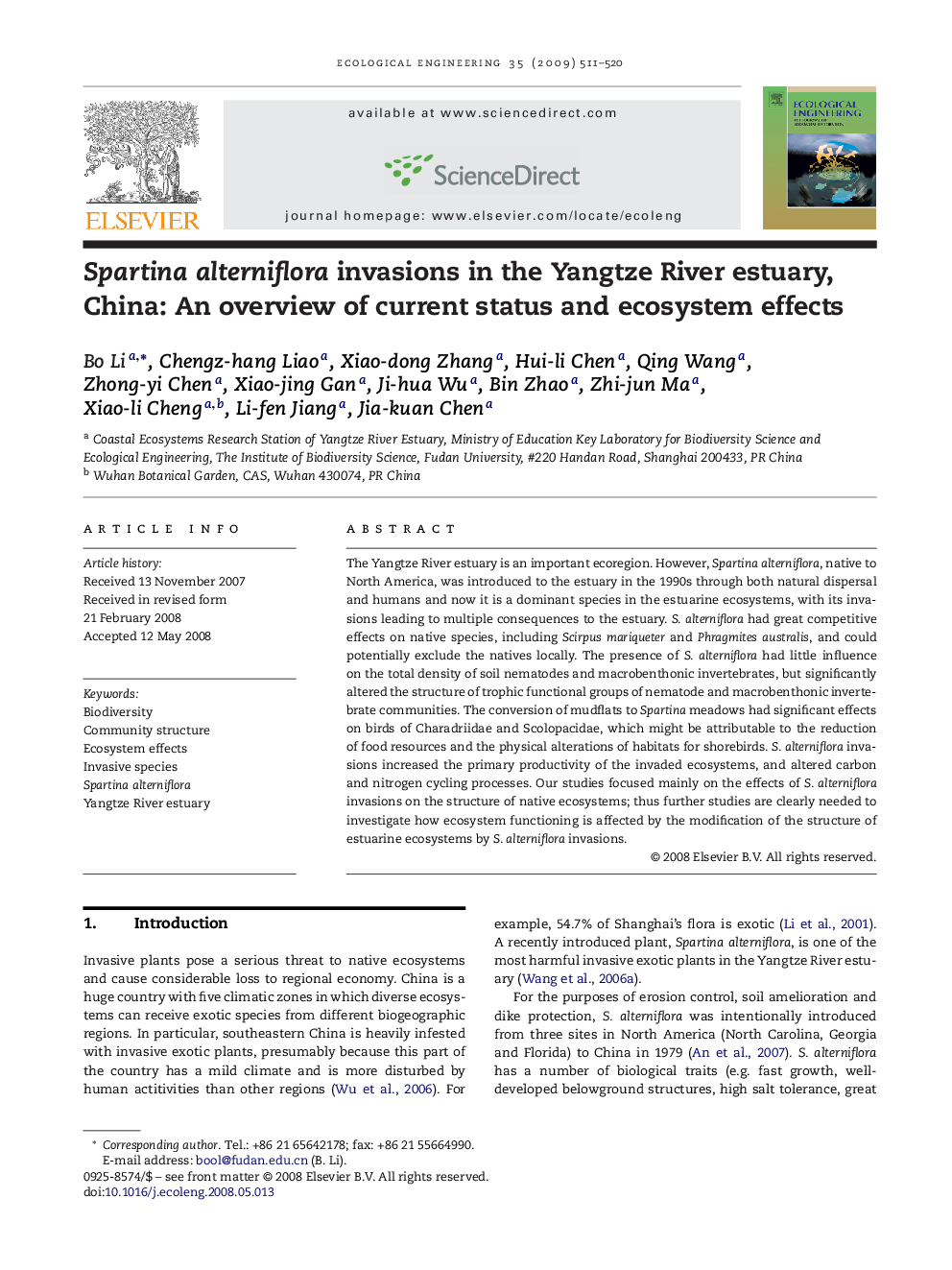| کد مقاله | کد نشریه | سال انتشار | مقاله انگلیسی | نسخه تمام متن |
|---|---|---|---|---|
| 4390982 | 1305204 | 2009 | 10 صفحه PDF | دانلود رایگان |

The Yangtze River estuary is an important ecoregion. However, Spartina alterniflora, native to North America, was introduced to the estuary in the 1990s through both natural dispersal and humans and now it is a dominant species in the estuarine ecosystems, with its invasions leading to multiple consequences to the estuary. S. alterniflora had great competitive effects on native species, including Scirpus mariqueter and Phragmites australis, and could potentially exclude the natives locally. The presence of S. alterniflora had little influence on the total density of soil nematodes and macrobenthonic invertebrates, but significantly altered the structure of trophic functional groups of nematode and macrobenthonic invertebrate communities. The conversion of mudflats to Spartina meadows had significant effects on birds of Charadriidae and Scolopacidae, which might be attributable to the reduction of food resources and the physical alterations of habitats for shorebirds. S. alterniflora invasions increased the primary productivity of the invaded ecosystems, and altered carbon and nitrogen cycling processes. Our studies focused mainly on the effects of S. alterniflora invasions on the structure of native ecosystems; thus further studies are clearly needed to investigate how ecosystem functioning is affected by the modification of the structure of estuarine ecosystems by S. alterniflora invasions.
Journal: Ecological Engineering - Volume 35, Issue 4, April 2009, Pages 511–520